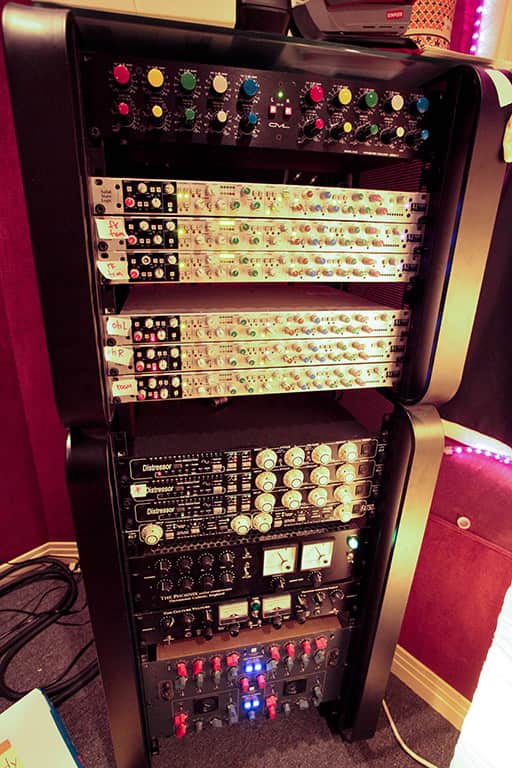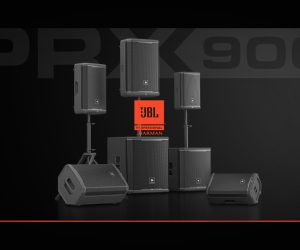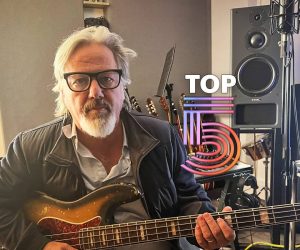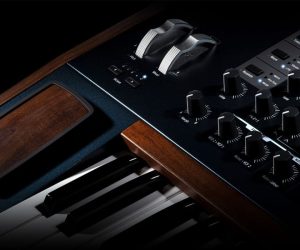
Spike Stent: Mixing Mylo Xyloto
Mark ‘Spike’ Stent invites us into his LA studio to talk through the mixing of Coldplay’s latest masterwork.
Photos: Akiko Bharoocha
As so often when a crisis hits, those at the top are the least affected. The digital revolution has largely laid waste to the studio world and the lives of many studio professionals have become much harder as a result. Yet a handful of the world’s top studios are still doing good business, as do a few top professionals that remain relatively unaffected by the crisis around them. Mark ‘Spike’ Stent is one of them.
Stent is Britain’s most successful mix engineer, and currently based in Los Angeles, where he runs his own facility, called Mixsuite LA. It’s a measure of his success that he was involved in the mixing of two albums that topped charts around the world at the end of 2011. He mixed most of Coldplay’s Mylo Xyloto, which went to No.1 in two dozen countries, and the first two singles, Shake It Out and No Light, No Light, from Florence & The Machine’s Ceremonial, another album that was one of the major events of the year. In addition, in recent years Stent had his hand in hit albums by Duran Duran, Keane, Christine Aguilera, Usher, Lady Gaga, Muse, Massive Attack, Cheryl Cole, Madonna, Beyoncé, Björk, and many more. It’s an impressive track record that, while heavy on UK rock bands, also sees him crossing over to American R&B/hip-hop territory – a rare achievement for a UK mixer.
THINKING INSIDE THE BOX
Via an echo-y phone line and then a dropout-laden Skype connection (21C communication devices also suffer from the ills of digital, it appears), Stent elaborated on his working methods on general, and those on Mylo Xyloto in particular, in the process offering some pointers on how to thrive in the digital age. He was talking from his control room at Mixsuite LA, which features his beloved SSL G Series desk as well as an impressive selection of outboard gear, and his favourite KRK 9000B – “I’m a creature of habit!” he says. However, it turns out that these are not the telltale signs of a champion of analogue gear and/or analogue working methods. Stent is not at all prone to embark on old-fogey style, analogue-is-better-and-digital-is-bad-for-your-health rants.
Instead, the Briton stresses, “You have to move with the times. I still use my analogue gear, and particularly my magic SSL desk, which has old E-series cards in the centre section and a sound that I love. I like the sound of analogue in general, and the items of outboard here, but I have gradually moved to doing more and more things in the box. It has been a natural progression, in part driven by the fact that people now call me days or weeks after I’ve done a mix, asking me to do a different version. In five minutes it is on its way to them. In the old days it would have taken three hours to recall a mix on the outboard and the desk. So I have embraced new technology, while not forgetting my analogue roots.
I work with a hybrid of old and new approaches. It depends on the music, and I’ll sometimes do urban tracks entirely in the box. But colouring is very important to me, and when you’re working purely in the box it can sound too clean quite easily. Anything more organic, more rock-like or band-like, shouldn’t sound too clean or nice, so it will often benefit from being put through the analogue domain. But it’s very rare these days that I lay an entire session out on the desk. Instead I’ll start in the box, and will then lay out sub-mixes of selected tracks over the desk, most often drums and bass. It gives me a particular colour that I can’t get any other way.”


FROM TEABOY TO SO-CAL
Mark ‘Spike’ Stent’s roots go back to the 1980s, when he got into the studio world via the then regular tea-boy-to-engineer route at Jacobs Studio in Hampshire, just outside London. He earned his nickname because of his spikey hair at the time, and one rock ‘n roller, unable to remember the name ‘Mark,’ called him Spike. The spikey hair has long gone, but the nickname has stuck. Stent went freelance in 1987 and made his breakthrough with pioneering mixes of the KLF. Since then he’s clocked up an astonishing 800 credits and counting, and earned three Grammy Awards. He worked at Olympic Studios from 1999 to 2007, after which he built a studio in Salisbury in west England, which, he says, was gear-wise a ‘duplicate’ of his setup at Olympic. However, after a six-week stint in Los Angeles in the summer of 2007, Stent and his large family (wife and four children) decided that they wanted to stay there, which meant that he gradually moved his operations over to LA. He first worked from Chalice Recording Studios in LA but brought over his beloved SSL G-series in August 2010, when he began work in his current Santa Monica facility, which consists of a control room, a main live room, a small booth and a machine room. He works there with assistant Pierre Eiras and former assistant and now fully-fledged engineer Matt Green.
UNDERSTANDING BIG BOTTOM
With very high profile mixes, like those of Coldplay and Florence & The Machine, under his belt, Stent is clearly going from strength to strength, despite the challenges that moving to LA first entailed. “Moving to American was a big change for me,” he says. “I went from being a bigger fish in a smaller pond, to a minnow in shark-infested waters over here! I had done a lot of high profile work in the UK, and some people knew me here, but I had a point to prove in America. It gave me a big kick up the bottom, so to speak, which I think was good. I was in the habit of doing things a certain way in the UK, and needed a challenge. Coming to the US was a watershed moment for me. I’d been coming and going here for 20 years, but actually living here and properly absorbing everything was different. I had to learn very quickly how to mix urban records, and what was surprising to me was how different the approach to bottom end is here compared to the English approach. The way they place and EQ the kick and the rest of the drums, and the vocals… everything is different. Of course, I’d listened to American records for decades, and I thought I understood the sonics, but it turned out I didn’t. There’s far greater depth and punchiness to the bottom end in American records, particularly on urban records and in general they like things a lot darker. The kick is mixed much further forwards, and the snare and/or clap further back. Coming here made me understand the sonics of American records, and I had to adapt.”
One of the secrets of Stent’s success appears to be that he’s able to adapt well to changes in environment as well as in technology. His current hybrid method of working – integrating the old and the new – means that he has “shitloads of plug-ins” and in general has made himself completely adept at working in the box, something many old-school engineers baulk at. “I haven’t bought anything new on the outboard front for a while – the Bricasti was the last piece of kit I bought, nine months ago,” explains Stent. “If you keep changing your gear, it’s hard to focus on the music! But I am always getting new plug-ins. I like the UAD stuff and the Waves bundles, and particularly use the R-Bass and the JJ Puig and Chris Lord-Alge plug-ins. SoundToys make some really great things – I use their EchoBoy and Devil-Loc plug-ins a lot. There are many great things going on in the box. I don’t have a controller and still use a keyboard and mouse. I’ve become used to it. I’ve had a ProTools system for many years, so it’s not a new thing for me to work in the box. It’s been a natural progression, just like ProTools has gradually become better, going 24-bit and with higher sample rates, computers being more power and memories being larger. It means that everything is so much better than it was in the past.”
I have gradually moved to doing more and more things in the box… people now call me days or weeks after I’ve done a mix, asking me to do a different version

MYLO DOWNLOW
Stent’s successful and apparently seamless adaptation of new working methods is a central theme when he describes his work on Coldplay’s Mylo Xyloto. The album was produced by Markus Dravs, Daniel Green, and Rik Simpson and recorded at Coldplay’s The Bakery and The Beehive’s studios in North London – the latter is in a big hall, offering ample possibilities for big room sounds. Stent had a hand in mixing 11 tracks off the album.
When asked for details, Stent describes a very fluid way of working in which all aspects of the production process run into each other. Tracks didn’t evolve in a linear way, and the mixing stage wasn’t necessarily at the end. It’s a modern approach that he, again, is entirely comfortable with. “The band was still recording when I was mixing, so versions would be changed and updated as I was going along. There were also different mixes, and that’s the way the band likes to work. I was not privy to whether they edited different mixes together or not.
“I’d say that 90% of the mixes were done at Mixsuite LA, and Chris would redo a vocal part while I was working, or Johnny would change a guitar part, and I’d work those changes in as I mixed, or after I’d finished the mix, and I’d send that back to them, and they might react to that, and change things again.
“When I mix an album, I look at mixes on a song-by-song basis, I never look at the whole album. I don’t make templates. That doesn’t work for me. In each song the band may track things differently, or use different mics, or play different instruments. I may sometimes try to retain some settings that I really like, but I never actually use them. I go by feel. I know what I like and how I think it should sound. I may have compared the bottom and top end of some different mixes, when I’m concerned about something, but I always just tend to go with what I think is right for each track. I don’t worry about consistency over a whole album. That’s the job of the producers and mastering engineer.”
FEELING IT
“Because feel is so important, I always ask for the rough, and also for the very first demo a band or an artist made, and any other version that the band or the producer, or the A&R man thinks is relevant. I may end up with two or three versions as reference points, which I’ll then load into the session, so I can flip between them and compare them. The original demo is there for the vibe – when people spend a lot of time on production and overdubbing they may lose sight of that. You can sit there and be a purist and say that the snare drum sound isn’t right, but you have to listen to the song as a whole. This obviously wasn’t an issue with Coldplay, but these days I get stuff that’s been recorded in bedrooms, in small programming rooms, on stage, and that may have huge problems that need sorting out. If that is the case, I’ll dive into the playlist, and try to get something together that I feel is a better representation of the track. If necessary, I’ll program new parts in, or I’ll bring someone in to program them. I have never sent a mix back because I felt it wasn’t ready or not good enough. If the song isn’t working, it’s my job to sort it out and get it right!”


CREATURE OF HABIT
Clearly, Stent’s flexibility and ability to adjust to the needs of the times, and the song he is mixing, stand him in good stead. It’s interesting therefore, to hear him calling himself “a creature of habit” when referring to some of his gear, like his KRK 9000 monitors, and also to the way he likes to lay out his sessions. When he gets a ProTools session in for mixing the first thing that happens has remained relatively the same for a number of years, which is that his assistant will begin with, insofar as required, “cleaning the session up and organising the whole thing in the way I want it organised. I am quite anal about the way I like the session organised, because it makes the whole process quicker and easier. Vocals are cleaned, breaths taken down, and any de-essing is taken care of as well, using the Waves de-esser. If I want to compress the hell out of a vocal because of a certain vibe I’m after, I need all the breaths taken down, the ends of lines cleaned up, and if it was recorded in a large room and/or with a handheld mic, all the extraneous noises removed. After everything is cleaned up and organised, I’ll add samples, if needed, usually kick, snare and tom samples. I never replace, I always add to things.”
“When I begin the actual mix, I’ll usually start with the drums. I’m of the opinion that unless you have a solid foundation, it doesn’t matter what you stick on top of it, it won’t sound good. So that’s where I start, depending on the type of song. Once I’m happy with the drums, I’ll bring in the bass, then the guitars and keyboards, and eventually the strings and so on, again depending on the nature of the track of course. During this process I’ll periodically check that the vocals sound okay in the track. Once I have the instrumentation as exciting as I can get it, I’ll bring the vocals in, and I’ll really fine-tune them. Throughout this process I focus on the general vibe; I’m not very clinical in my approach – I want to make sure that I get the emotion right. Matt will tell you that there have been times when I’ve pulled everything down three or four times and started from scratch again each time. I do this, rather than tinker with what I have, when it isn’t working, when the vibe isn’t right. All this tends to happen in the box, and, as I described earlier, I’ll then lay different things out over the desk, to get that analogue colour.”
“When you look at the screen shot for Every Teardrop Is A Waterfall you’ll notice the demos/roughs at the top, for reference. I did indeed begin the mix with the drums, as I always do, but then brought in the piano, because the piano provided the most important hook in the arrangement. After that I added in the bass, then the guitars and then the whole end section where the real kick drum comes in. I didn’t add any samples, this track was mostly a case of balancing what I had. The main thing in the song was the piano riff, and the main issue was keeping the warmth and excitement going all the way until the end. There were some strings, but they were easy, very straightforward to mix. All the treatments that you hear were already in the track, they were part of the production. The production was really clever. The whole orchestral feel, the fact that the arrangement sounds quite big, came from the producers, ie. Markus, Ric and Dan.”
“When working in the box, I’ll tend to subgroup the different kick, snare, toms, and other tracks. So any kicks will be subgrouped to a kick master, the same with a snare or clap, and all that is then sent to a drum master, on which sub compression is happening. So there is a lot of submixing and processing, which mostly is about compression. The plug-ins I used on the drums in Teardrops were mostly Waves SSL Channels for EQ and UAD Fatsos for some colouration. I probably also used the Fatso or Devil-Loc plug-ins for colouration on the room sounds, just to give some warmth and distortion. I had quite a number of plug-ins on the piano: the Waves SSL E-channel and SSL G-channel for EQ, the Waves Puigchild 660 for compression, and the SoundToys FilterFreak, Decapitator, and EchoBoy. The Decapitator added some drive to the sound, the FilterFreak changed the nature of the tone, and the EchoBoy added a delay. A lot of the sound is coming from the FilterFreak and Decapitator. On the bass I had, again, the Waves SSL channel for EQ, and the CLA-2A compressor, plus the SPL TwinTube, a plug-in that I really like. The lead vocals had a Waves De-Esser, Waves PuigTec EQP-1A, Waves PuigChild 660, and once again the SSL-Channel. I have different EQ in different sections of the vocals, and automated de-essing.”

















RESPONSES